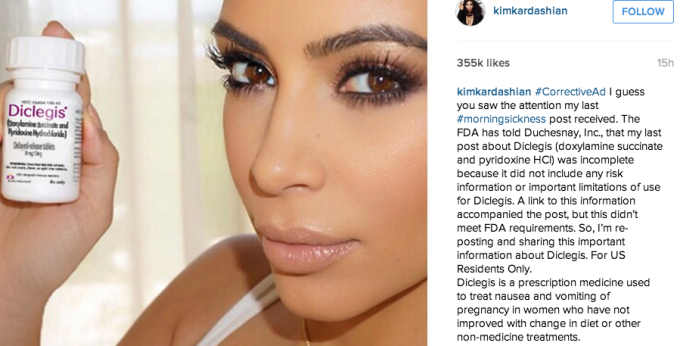With a new year comes plenty of change, but there’s always one thing you can count on: The Content Marketing Weekly. The CM Weekly is your regular dose of tips, insights, trends, updates and everything else related to content marketing.
This week, we cover everything from content distribution strategies to a creativity murder mystery (SPOILERS: You’re the main suspect).
The weather may be frosty, but the content marketing tidbits are rolling in red-hot:
The One Thing Killing Your Most Creative Content Ideas (and How to Stop It)
No one sets out to create stale, boring content, yet we see it all the time. Who’s killing off content creativity? Well, just look in the mirror. That’s right, it’s you – or, more specifically, your content pitches.
Over at Content Marketing Institute, Carla Johnson places the blame for stymied creativity squarely on the shoulders of poorly constructed project pitches. A bad pitch can drive a knife right through the heart of even the best creative content brainchild.
Johnson recommends a four-step strategy to better project pitches:
- Observation: Start with a tangible, real-world source of inspiration that provides the right context for your idea.
- Distillation: Drill down into the very essence of your idea. Outline the overall theme you hope to cover.
- Relation: Bring it all back to your brand. Give your boss that “so what?” moment by connecting your idea to your value-adds and marketing goals.
- Generation: Explain your thought process from inspiration to ideation. Show your audience how you got from point A to point B.

When you’re wondering why your content pitches keep going down in flames.
Is there a content killer in your conference room? Read the rest of the article here.
5 Content Distribution Strategies for 2018
Marketers put their heart and soul into creating the very best digital content possible, but don’t overlook the importance of a strong distribution strategy. Your “Big Little Lies”-themed blog post on managed cloud services won’t do much good if no one can find it.
According to Sherry Bonelli via Search Engine Land, one of the biggest missed opportunities brands let pass by is repurposing existing content. If you have a really strong piece of content, consider reworking that theme or idea into another format. Ebooks, infographics and videos are all great candidates. It’s not about regurgitating content but exploring new facets to the same concept that matches the inherent strengths of each format.

Maximize the value of your content by repurposing it into different formats.
Bonelli also recommends considering posting your content on a specialized sub-Reddit. We’d suggest pumping the brakes a little on that idea, since Reddit users are notoriously skeptical of branded content. Approach with caution.
Get more content distribution guidance by checking out the full article.
Google Local Search: 5 Things You Need to Do to Rank Now
If nothing else, Google always keeps us on our toes. It seems like every new algorithm update leads to new local best practices that every marketer needs to follow. For instance, after the October 2017 update, Google applications will no longer tie search results to country domains. Instead, they will use the user’s actual location to determine what’s relevant.

A Pro Rank Tracker-sponsored Search Engine Journal blog detailed the top changes marketers need to make to their local search strategy to stay competitive in the new year, including:
- Prioritize online directories: The importance of online directories like Yelp to local search rankings continues to grow. Not just the big, national sites, either – be sure to look at regional directories as well.
- Optimize your title tag: Google will often look at your title tag before other criteria when determining your local search ranking. To start off on the right foot, include a strong keyword and location in that tag.
- Encourage user reviews: Brands tend to approach customer reviews with a little trepidation, but they’re critical components to your local search ranking, especially if you have your sights set on the local 3-pack. Do what you can to encourage more customers to leave reviews, good or bad.
2018: Year of the Influencer or Year of the Influencer Marketing Implosion?
One way or another, 2018 is poised to be a critical year for influencer marketing. More brands are partnering with established social media personalities and industry voices to create content that reaches the widest audience possible with the support of a trusted, well-known name.
But is it the right strategy for everyone?
Didit co-founder Kevin Lee weighed the pros and cons of influencer marketing in this Marketing Land post, noting that as promising as this type of strategy is (reach new demographics, raise brand awareness, benefit from second order effects, etc.), there are plenty of risks involved as well.
Industry regulations may limit what an influencer can post or require them to disclose certain information that would cast a brand or product in a negative light when discussing particular topics. This very situation happened to Kim Kardashian when she promoted a morning sickness drug on her Instagram account. The FDA forced the reality TV star to update the post to disclose the drug’s potential side effects.

Some companies also stumble when balancing their brand messaging with influencer marketing authenticity. Do you give the influencer complete discretion to create their content? Do you trust them to always positively represent your brand? Will too much intervention make their content seem bought and paid-over? It’s a fine line to walk, and Lee expects many businesses to land on both the right and wrong side of the influencer marketing equation.
Is influencer marketing trending down or just getting started? Read the entire article and decide for yourself.
That’s it for now, but be sure to check back in next week!





